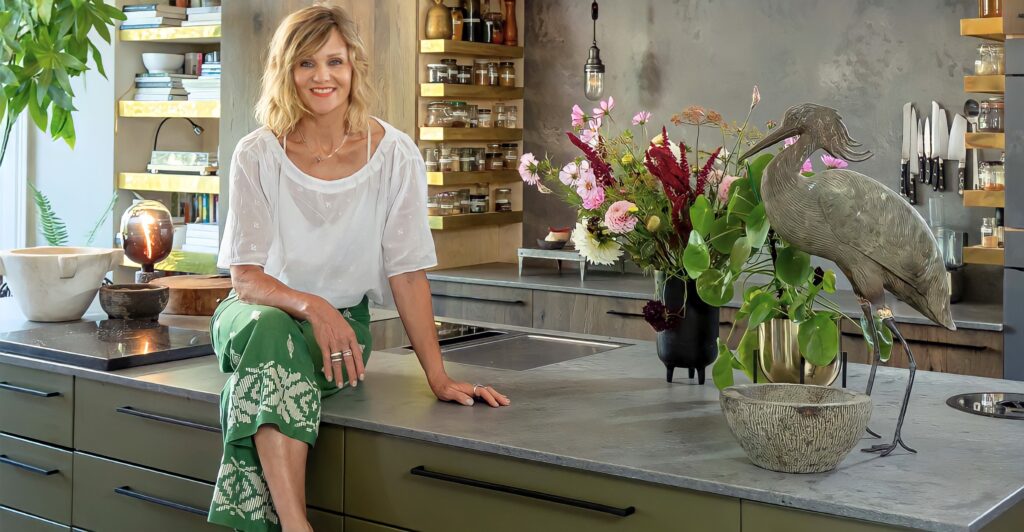
From a solely functional platform on which to prepare food, the kitchen island has evolved into a multitasking, conversational hub and visual statement. Its journey from a utilitarian afterthought to an Instagram-worthy showpiece speaks to our collective obsession with open-plan living, culinary theater, and decadent decor.
The National Association of Home Builders (NAHB, 2022) reported that over 76% of remodels now feature kitchen islands. But what transforms a mere countertop into the room’s centerpiece?
Styling. Whether via floral arrangements or fusion tech hubs, a styled island says a lot about your personality, intention, and lifestyle. Let’s take a look at eight creative—and unexpected—ways to style your kitchen island like a pro while ensuring your kitchen is still functional but with a dash of design rebellion.
A Glossary of Kitchen Island Types

Kitchen islands aren’t one-size-fits-all. You can choose from a plethora of styles, designs, and materials to make your island the centerpiece of the kitchen.
There’s the classic stationary island, perfect for gourmet cooking, mobile islands or carts to provide smaller kitchens with flexibility, and two-tiered islands that allow for separation in work zones.
Island designs include stone slab waterfalls islands for architectural drama, furniture-style islands with open shelves and legs, and even galley-style islands, which mimic parallel counters best suited for narrower spaces.
Therefore, understanding what kitchen island type and design best suits your space will likely inform how you use it and help you determine the perfect way to style it.
1. Bring in Botanicals (But Not Just a Vase of Tulips)

Florals aren’t new, but botanical installations are. Swap out the traditional bouquet for suspended greenery, terrariums, or edible herbs in sleek, modular planters.
For example, you could create a minimalist grid of thyme, basil, and mint in pots on a stone tray—functional, fragrant, and chef-approved. For drama, suspend a trellis with trailing vines above your island.
Since plants can decrease airborne pollutants by up to 60%, they add to your kitchen’s overall wellness and beauty in one stroke. Additionally, they can be both useful and a conversation starter. The moral? Plants are not just pretty; they’re powerful design tools.
2. Curate a Micro Art Gallery
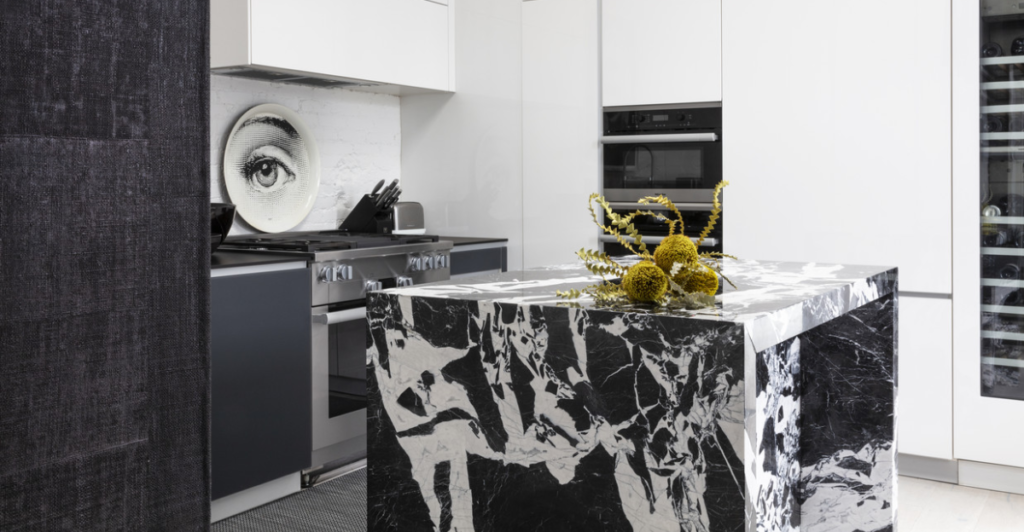
The kitchen is the heart of the home—why not the gallery, as well? Break with tradition and display small-scale art or a sculptural centerpiece on your island. For example, consider abstract ceramic busts, oil miniatures, or a tipped framed piece under museum lighting.
Since islands are now commonly used for other activities, such as socializing. Therefore, adding art to your kitchen is an unexpected move that lends personality and breaks the traditional rule that the kitchen only needs to serve a specific purpose.
Further, it elevates the room from a simple place to prepare meals to a sophisticated, statement-making room with an atmosphere that gives your guests something to talk about.
3. Go Industrial with Unexpected Materials

Reclaimed metal? A cement planter? Antique gears as sculpture? Welcome to the industrial kitchen island mashup, where raw materials get softened in the warmth of a lived-in home.
Rather than choosing marble or wood accents, consider steel trays, oxidized copper bowls, or matte black hardware for a more utilitarian chic aesthetic. Pair hard lines with soft texture, where you place a handwoven runner on the counter next to leather-strapped stools, for example.
This aesthetic is contrarian styling: the cold, machine-like aesthetic is lovely in its imperfection. Industrial accents bring weight to space while grounding the island as more than a snack stop—it’s a statement of taste, personality, and resourcefulness.
4. Create a Seasonal Tablescape

Instead of treating your island as a permanent display zone, consider rotating your overall styling and design to the changing seasons. For example, try seasonal tablescapes, such as autumn pumpkins in brushed gold bowls, spring blooms with pastel runners, or summer citrus in sculptural glass.
Seasonal styling can give your space a natural rhythm that changes as time passes. As our environment influences mood, visual cues, such as seasonal themes, can discipline our sense of time and focus the mind.
Additionally, this styling approach gives your kitchen a new feeling more frequently without major renovations. Treat your island as a living installation making things interesting and inviting spontaneity.
5. Integrate Tech Like It’s the New China Cabinet
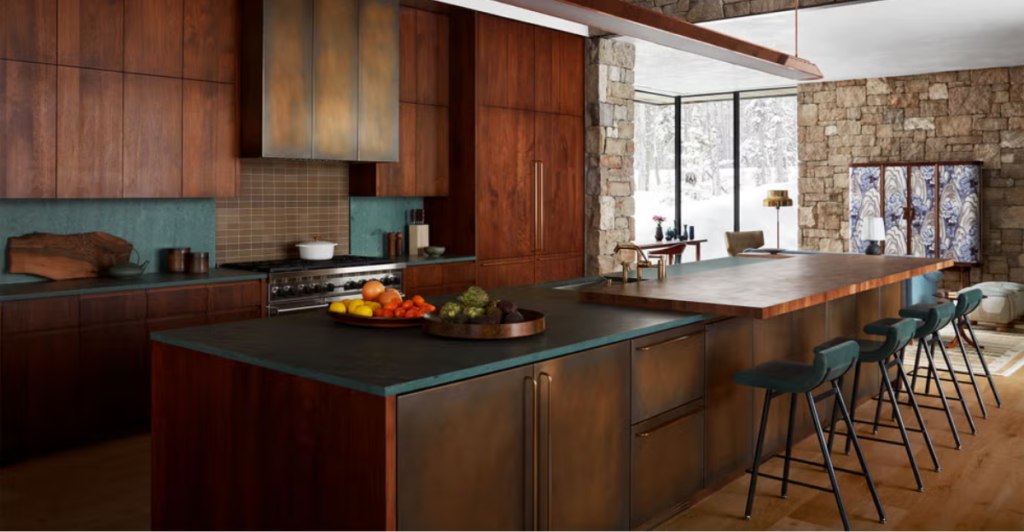
We are now entering the age of smart homes, so why not update your island to include convenient technical advancements? Concealed tech features are becoming increasingly popular, especially in multi-functional kitchens.
So consider showcasing your tech with pride by installing a minimalist gadget dock, a touch-screen recipe center embedded in the surface, or even a sound system fitted into the woodwork, for example.
Additionally, our tech can complement our older furniture too in a vintage-modern juxtaposition: an antique fruit bowl next to a glowing Alexa. It’s the new-age china cabinet, where instead of fine porcelain, you’re showcasing intelligent design.
6. Create a Boutique Hotel Bar Vibe
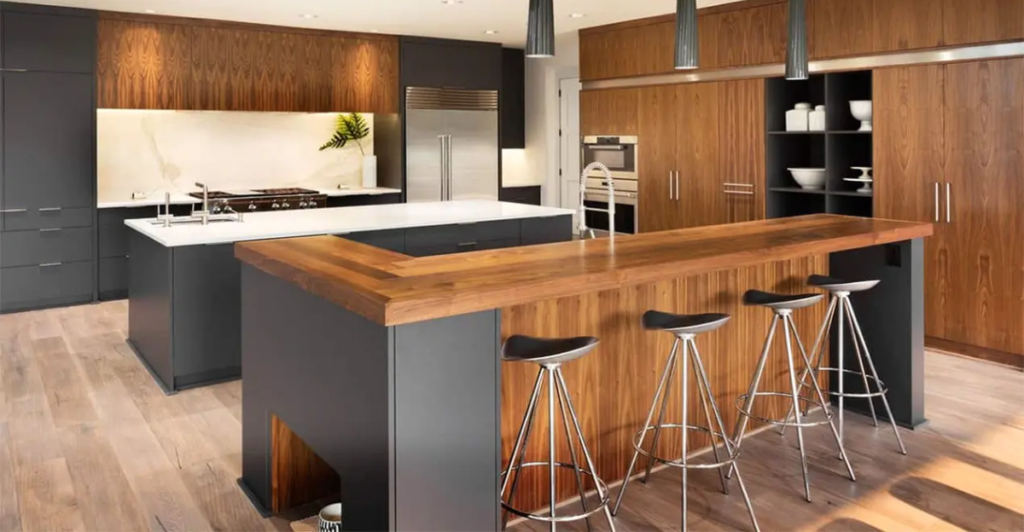
For those who like to entertain, give your guests a reason to linger by channeling the energy of a boutique hotel bar. Think decanters, artisanal cocktail tools, low lighting, and high drama.
Since over 32% of American homeowners entertain on a weekly basis, and the kitchen is almost always the center of it, why not indulge in its drama? Your island can be a speakeasy for the senses, minus the velvet rope.
To set the tone, you could display bitters in vintage apothecary bottles and cut-crystal tumblers while ensuring there is a stylish drink cart within arm’s length. This design style isn’t about drinking, instead, think of it as storytelling and setting the mood for an uncomfortable evening.
7. Embrace Negative Space
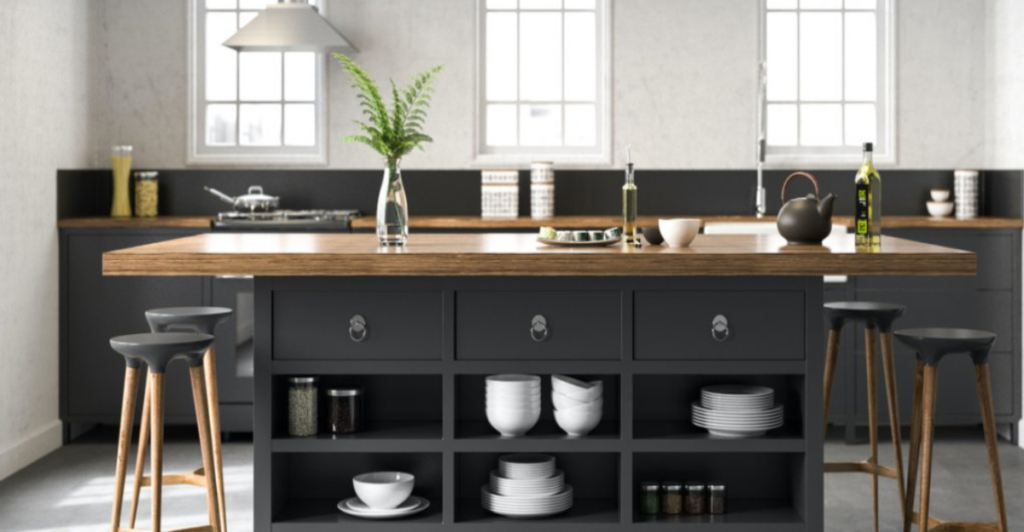
As minimalist design enthusiasts will tell you, less is often more—so much more. So consider celebrating negative space. Instead of filling your island, deliberately leave it empty in places to emphasize shape, material, and light.
Such minimalism is not about laziness or cleanliness but rather a testament to spatial awareness. For example, you could leave one side of your island open to expose a dramatic waterfall edge or let light hit a polished surface to create a cozier mood.
This styling rebelliously rejects “more is more.” Done well, this stripped-down aesthetic is more evocative than the most decorated décor, where the silence of space speaks volumes.
8. Tell a Story with Layered Vignettes
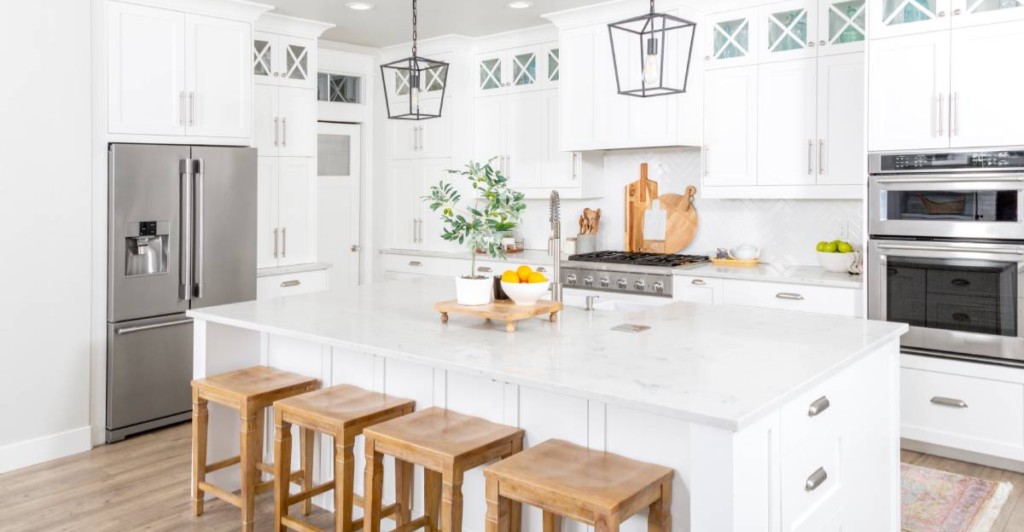
Our last tip is the most strategic and artful styling solution: layered vignettes. Thoughtfully placed and layered groups narrate a story—a ceramic bowl next to a tattered cookbook, together with a brass candleholder and tiny clock.
Each item speaks to an element of your routine, interests, and way of living. Layering creates depth and function, so the island is both useful and beautiful to behold. Unlike rigid, symmetrical compositions, vignettes welcome asymmetry and movement.
Think of layered vignettes as visual haikus that reveal themselves over time. Tell stories, not tableaux. With this approach, your kitchen island doesn’t just look like a professional design; it becomes a declaration of personality.
Discover more trending stories and Follow us to keep inspiration flowing to your feed!

Craving more home and lifestyle inspiration? Hit Follow to keep the creativity flowing, and let us know your thoughts in the comments below!
